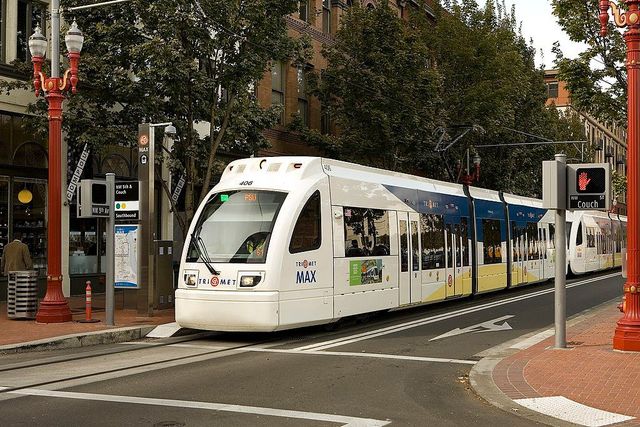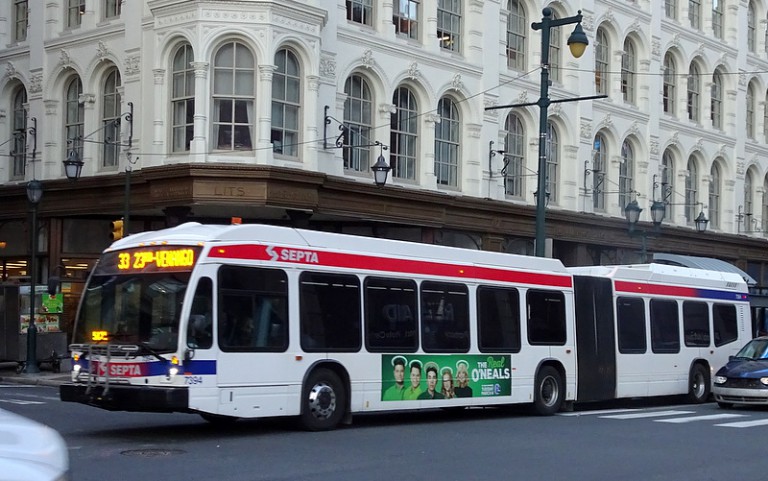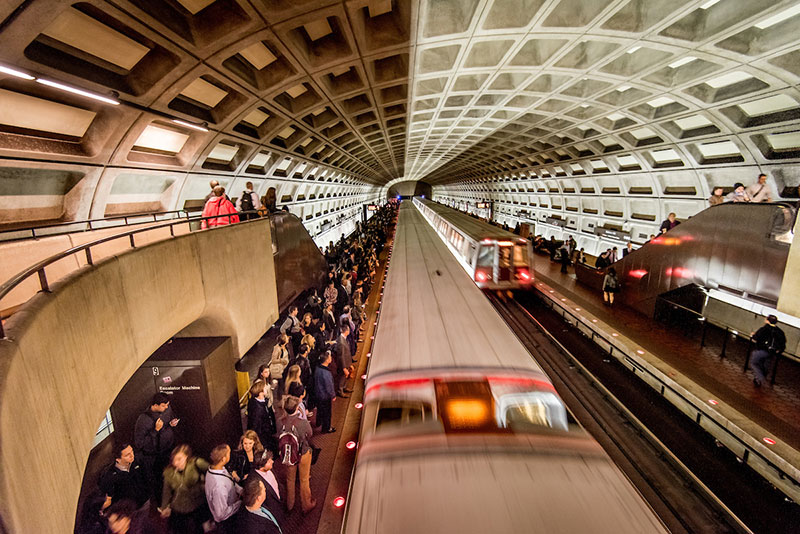Public transportation in the United States has become a defining factor for modern urban living, shaping how people commute, connect, and experience city life. In 2025, cities across the country are pushing forward with innovative systems that focus on convenience, sustainability, and efficiency. The top ten cities with the best public transport in USA highlight destinations where buses, subways, light rail, trams, and commuter trains are designed to reduce congestion, cut travel time, and provide reliable service for residents and tourists.
From New York City’s vast subway network to San Francisco’s blend of BART and streetcars, each city showcases unique investments in smart transit systems, eco friendly buses, and advanced metro lines. Public transit has also become a trending topic with growing attention on electric buses, high speed rail, and contactless payment systems that make commuting smoother. Cities like Chicago, Washington DC, Boston, and Seattle stand out for offering extensive routes and modernized stations that encourage more people to choose mass transit over private cars.
This ranking of the top US cities for public transportation in 2025 focuses on accessibility, affordability, and sustainability while reflecting current urban mobility trends. It provides insights for travelers, professionals, and students seeking cities where moving around is seamless and eco conscious, making these destinations the best examples of reliable and world class transport systems in America today.
Top Ten Cities With The Best Public Transport In USA (2025)
10. Portland Oregon

Portland’s public transit strength comes from a deliberate mix of light rail, frequent bus corridors, streetcar lines and an urban design that values pedestrians and cyclists. The MAX light rail provides a backbone through the metro area while frequent buses and targeted service connect neighbourhoods that do not sit on rail corridors. City leadership put first mile last mile planning at the centre of service improvements which helps riders reach stations using bike share, scooters, or short shuttle links. Sustainability plays a visible role in investment choices with ongoing upgrades to make fleets quieter and cleaner.
Riders appreciate reliable real time tracking through mobile apps and simplified pass options that keep occasional and daily travel affordable. Portland’s transit oriented development around major stops increases housing and jobs within walking distance of transit and reduces dependence on private cars. Transit equity is an explicit priority so service improvements aim to reach low income corridors and underserved communities. The combined effect is a system that supports car free living for many residents while continuing to innovate around frequency and customer experience.
9. San Diego California

San Diego’s transit network is quietly maturing into a multi modal system that includes light rail, commuter rail, frequent bus corridors and growing bus rapid transit style service on major corridors. The Trolley light rail lines knit together downtown, major employment centres and neighbourhoods in the inner suburbs while COASTER commuter rail serves longer trips along the coast. Recent years saw a push for better schedule coordination and stronger real time tracking so riders can plan transfers with greater confidence.
Land use near core stations is changing as transit oriented development adds walkable retail and new housing options aimed at commuters and younger professionals. San Diego also focuses on airport and downtown connections which are crucial for both local commuters and visitors who rely on public transport. Fleet modernization and plans for cleaner buses support regional goals to reduce pollution. First mile last mile links through bike share and local shuttles strengthen connections between neighbourhoods and fixed route transit. All these developments increase the transit score of many San Diego neighbourhoods and make choosing transit more convenient.
8. Philadelphia Pennsylvania

Philadelphia’s regional transit agency operates an extensive mix of subways, buses, trolleys, light rail and commuter rail which together serve a diverse city and the surrounding suburbs. The network provides direct access to major job centres and educational institutions while supporting shorter walkable trips inside neighbourhoods. Service planners continue to focus on schedule reliability, clearer real time arrival tools and fairer fare options that reduce friction for daily commuters.
Philadelphia has a long history of transit oriented corridors where retail and housing cluster near rail and trolley stops which helps daily ridership and local business. Transit equity is a major theme in planning conversations so investments are guided toward corridors with the greatest need for access to jobs and services. Improvements to station lighting, shelters and accessibility make transit feel safer and more usable across all hours. Regional commuter rail helps tie the outer suburbs into the city core making public transport a credible choice for many longer commutes and reducing regional car traffic.
7. Chicago Illinois

Chicago’s robust network of elevated trains buses and commuter rail makes it one of the most connected US metros. The rapid transit system covers dense urban corridors with high frequency service while Metra commuter rail provides reliable longer distance options for suburbs. Service reliability benefits from ongoing capital investments aimed at modernizing signals and improving station access. Real time tracking apps help riders coordinate transfers between rail and bus so a commute that uses multiple modes is easier to navigate.
The city has also targeted accessibility improvements at older stations and streamlined transfers to reduce total trip time. Chicago planners emphasize integrated ticketing and affordable pass structures that lower the cost barrier for frequent ridership. Transit oriented development projects around key stations create more compact, walkable neighbourhoods and expand options for people seeking car light lifestyles. Bus network redesigns that prioritize frequent routes have increased midday and off peak service in many parts of the city making transit an option for more kinds of trips than just work commutes.
6. Seattle Washington

Seattle’s public transport story in 2025 centers on rapid light rail expansion and improving bus to rail connectivity across a geographically diverse region. Link light rail has extended into new corridors and future expansions remain priorities for regional planners who aim to connect dense job hubs, coastal neighbourhoods and growing suburbs. Investments in bus priority lanes and enhanced transit integration reduce travel time and improve reliability for riders who transfer between modes.
Sound Transit and local agencies emphasize cleaner vehicle fleets and better real time tracking to improve the customer experience. First mile last mile solutions such as bike facilities and local circulator services feed larger stations and elevate the transit score of growing neighbourhoods. Because the region includes major job centres and a sprawling tech economy, reliable commuter rail and light rail options are critical in reducing car dependency for peak and non peak travel. Continued capital projects and service planning keep Seattle high on lists of cities with improving public transit and urban mobility.
5. Jersey City New Jersey

Jersey City benefits from rare regional connectivity that makes it more than a bedroom community for New York. PATH rail provides frequent trunk service into Manhattan while light rail and commuter rail lines knit the Hudson waterfront into the larger tri state system. Ferry services add redundancy and often faster direct routes for waterfront neighbourhoods. The result is short travel times into major employment zones which supports both daily commuters and reverse commuters.
Local planning emphasizes walkable mixed use development near transit hubs which increases ridership outside peak hours and improves local retail vibrancy. Contactless payment and integrated pass options between providers make transfers smoother and reduce barriers to ridership growth. First mile last mile solutions used in concert with frequent service encourage people to leave cars at home on many trips. As more employers and housing projects choose locations near transit, Jersey City’s transit score keeps improving and the city becomes a model of regional integration with heavy rail, light rail, ferry and bus services working together.
4. Boston Massachusetts

Boston’s public transit strength comes from an unusually broad set of options that include subway lines commuter rail ferries buses and light rail. The Massachusetts transit agency has experimented with fare free pilots for buses and has ongoing modernization projects to improve schedule reliability and station accessibility. Those pilots explore how removing fare friction can boost ridership on key corridors and support low income riders. The commuter rail network connects many suburbs to downtown while new investments focus on cleaner vehicles and improved platform access.
Transit oriented development near rail stations fuels walkable urban neighbourhoods and supports short trips without cars. Riders increasingly rely on mobile apps for real time tracking and trip planning which reduces perceived wait times and makes transfers less stressful. Overall the system provides dense coverage for core areas and improving frequency for outer corridors. Policies aimed at equity and affordability give the city an edge when people evaluate overall transit quality.
3. San Francisco California

San Francisco’s network is powerful because multiple agencies operate in coordinated ways to serve a compact but highly used metro area. BART and Muni join Caltrain ferries and regional buses to deliver a wide set of choices for commuters and visitors. The city has an explicit strategy to move toward a fully zero emission bus fleet and to modernize streetcar and light rail systems to reduce noise and emissions. Recent work on bus priority lanes and signal priority has improved average bus speeds on busy corridors and made scheduled trips more reliable.
Dense land use patterns mean many residents can reach a transit stop in short walking time which supports high transit score neighbourhoods. Contactless pay systems and robust real time tracking are standard for frequent users and tourists alike making complex trips manageable. Regional coordination helps when a commute crosses county lines and when last mile links such as bike share and shuttles connect passengers to major rail stations. These features keep San Francisco among the cities with the best public transport in the country.
2. Washington D C

Washington D C ranks near the top because multiple rail and bus systems converge in a compact urban core where walking and transit are natural choices. Metro rail and an extensive bus network offer frequent service that connects neighbourhoods to federal offices, universities and cultural destinations. Regional commuter rail lines give suburban riders direct routes into the city which lowers downtown parking demand and reduces congestion.
Service planning increasingly focuses on transit equity and accessibility with station upgrades and fare structures that aim to be more predictable for everyday riders. Real time alerts and integrated fare media make multi modal commutes less painful while safe and well lit stations encourage off peak travel. Because the city has so many concentrated job and activity centers, public transport is reliable for a wide range of trip types. Policy focus on maintaining high on time performance and expanding last mile services keeps Washington D C a top destination for riders who care about frequency and coverage.
1. New York City New York
/cdn.vox-cdn.com/uploads/chorus_image/image/58511189/busservice.0.jpg)
New York remains the nation’s most used and most complex public transport ecosystem. The vast subway network, extensive bus lines, commuter rail connections and a growing ferry system combine to provide unmatched coverage across the five boroughs and into the suburbs. In 2025 the city launched congestion pricing to reduce traffic in Manhattan and to raise funds for transit improvements which has led to measurable reductions in vehicle entries and improvements in bus speeds.
The transit authority has also moved toward more predictable fare caps and contactless payment to make daily costs easier to manage for frequent riders. Real time tracking and station modernization projects improve the rider experience while long term investments in accessibility bring older stations closer to modern standards. Large scale infrastructure upgrades and targeted service redesigns have helped boost public transit ridership across modes in 2025. The interplay of dense land use, multiple modal choices and continuous capital investment keeps New York at the top of any list of US cities with the best public transport.

